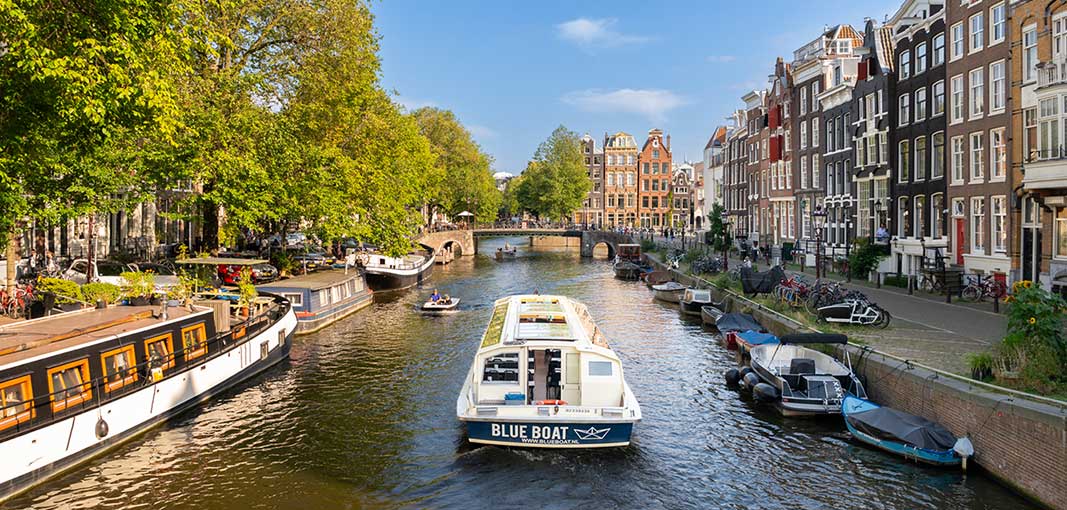Amsterdam has a way of making you feel at ease right away. The streets are clean, the pace is relaxed, and locals know how to enjoy their day without rushing through it. But even though it’s a very tourist-friendly place, there are a few things you’ll want to understand before you book that flight. Knowing them can save you time, money, and a bit of frustration. So, before you pull out your suitcase, take a few minutes to read this through.
Things to Know Before Traveling to Amsterdam
English Will Take You Far – But a Hallo Goes a Long Way
Almost everyone in Amsterdam speaks English, and they speak it well. You won’t struggle with menus or directions, and you won’t need a translator app to get through the day. But don’t let that fool you into thinking local customs don’t matter. A simple “hallo” (hello) or “dank je wel” (thank you) goes a long way. People appreciate it when you make the effort, even if you’re not fluent. It’s not about mastering the language. It’s about showing respect for where you are.
Bikes Rule the Roads – and the Sidewalks Too
Amsterdam's cycling culture isn't a trend. It's the backbone of how the city moves. Locals bike to work, school, lunch, appointments – you name it. That means bike lanes aren't just painted on the road; they're treated like highways. Step into one without looking, and you'll hear a bell before you see a bike – sometimes a little too late.

If you’re walking, stay in the right lane. If you’re biking, follow the signs and signals. And if you’re renting a bike, treat it like a vehicle, not a toy. Locals can spot an unsure tourist cyclist from a mile away. Ride predictably, don’t stop suddenly in the middle of the lane, and always use your hands when turning.
Cash Isn’t King Here
If you’re used to paying everything in cash while traveling, you’ll need to adjust. Most places in Amsterdam prefer cards – debit cards in particular. Some stores, supermarkets, or ticket machines won’t even accept credit cards. It’s less about fraud prevention and more about habit. Dutch locals pay with their debit cards nearly everywhere.
Before you go, let your bank know you’ll be traveling and check if your card works with European terminals. Have a small amount of cash on hand for rare situations, but rely on your card for everything else.
No One’s in a Rush – Including the Service
You’ll notice pretty quickly that service in restaurants is slower than what some travelers are used to. It’s not rude. It’s just different. In Amsterdam, the culture is more laid-back. Meals are meant to be enjoyed without checking your watch.
Don’t expect someone to swing by every ten minutes to refill your glass. If you need something, you can signal your server or head to the counter. And when you’re done eating, you’ll probably have to ask for the bill. It’s not a sign of bad service. It’s just the way things are done.
Public Transport Is Clean, Reliable, and Straightforward
Amsterdam has a tight and well-maintained public transport system – trams, buses, and metros that can take you almost anywhere in the city. The trams are especially handy if you're staying near the center. To use public transport, you’ll need an OV-chipkaart, or you can pay with contactless cards on board most rides. You tap in when you enter and tap out when you leave. Simple.
Just avoid the mistake of hopping on without checking in. Even if the door’s open and no one is watching, random checks do happen, and the fines aren’t small.
Don’t Assume Every Canal Tour Is the Same
Taking a canal tour sounds like something only tourists do, but it’s actually one of the better ways to see Amsterdam – as long as you pick the right kind. The big, covered boats give you a general overview. They’re fine if it’s your first time. But if you want something quieter, look for smaller boats with fewer people. Some are open-air, some have snacks or commentary, and some are run by locals who’ll give you a more personal take.

Book ahead if you’re going in the busy season, and check reviews before you pick. Some tours feel rushed and generic, while others feel like you're being shown around by a friend.
Museum Visits Need Planning – Especially for the Big Ones
Amsterdam has more museums than most people expect, and the most popular ones often sell out days in advance. The Anne Frank House, for example, doesn’t allow walk-ins. You’ll need to book your slot online – usually weeks before your visit. The Van Gogh Museum and Rijksmuseum are easier to get into, but still better to book ahead, especially during weekends or school holidays.
Don't try to cram them all into one day. Some of these places need time – not just for walking through but for absorbing what you see. Pick two at most in one day and give yourself breaks in between.
Local Food Has Its Own Character – Try It Once
Amsterdam isn’t often the first place that comes to mind when people talk about food destinations. But it has its own style. You’ll find street vendors selling herring topped with onions and pickles. It sounds intense, but it’s a local favorite. Stroopwafels are another must-try – warm, thin waffles filled with caramel syrup. They’re sold in markets and bakeries and taste best when freshly made.
And while there are plenty of international restaurants, trying at least one traditional Dutch dish can give you a better sense of the city’s character.
Conclusion
Traveling to Amsterdam doesn't require a guidebook in your hand every minute, but being aware of how the city works makes your visit smoother. It's a place that values balance – between work and rest, tradition and progress, locals and guests. Respect that rhythm, and the city has a way of opening up to you quietly and naturally.












